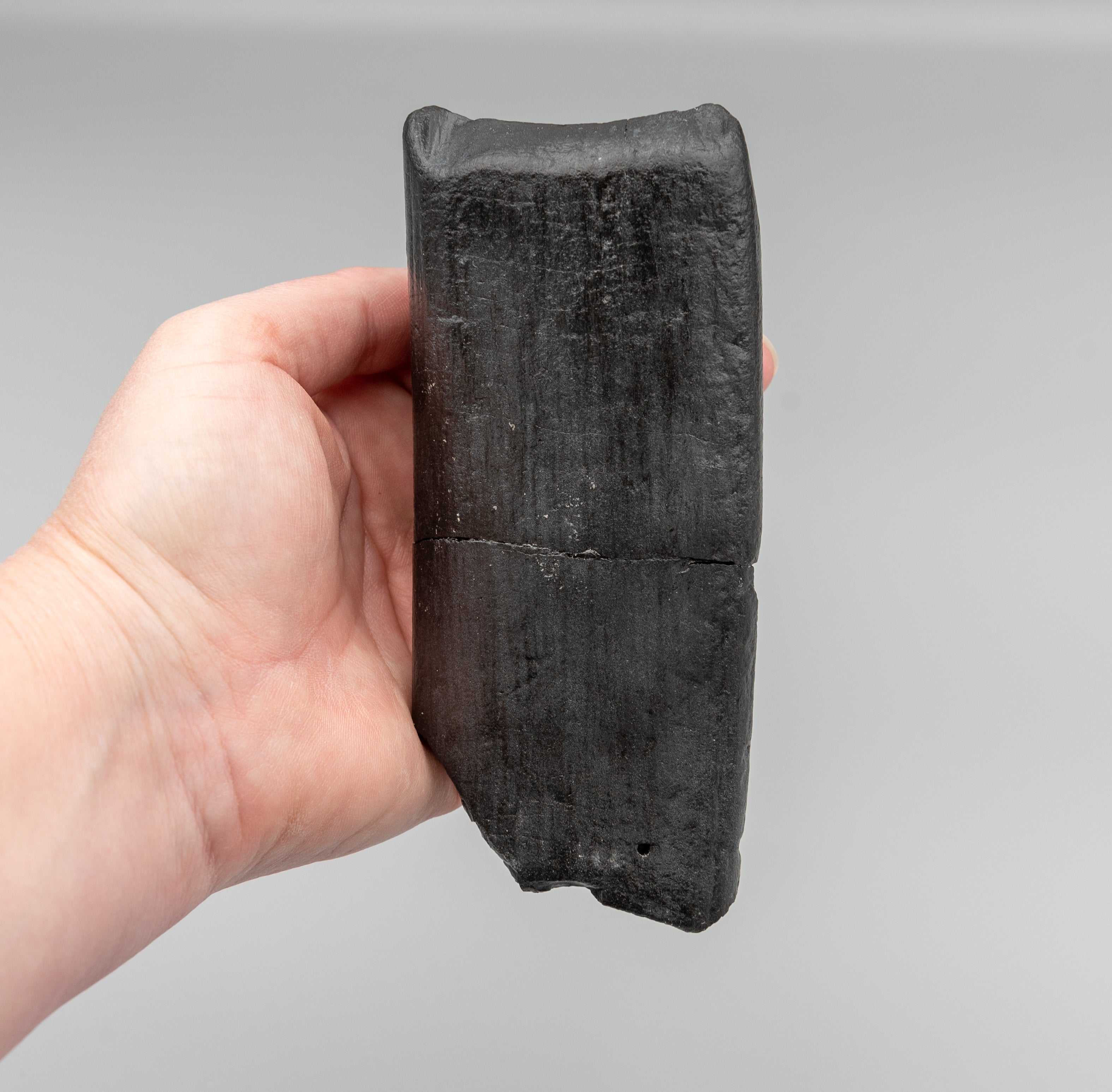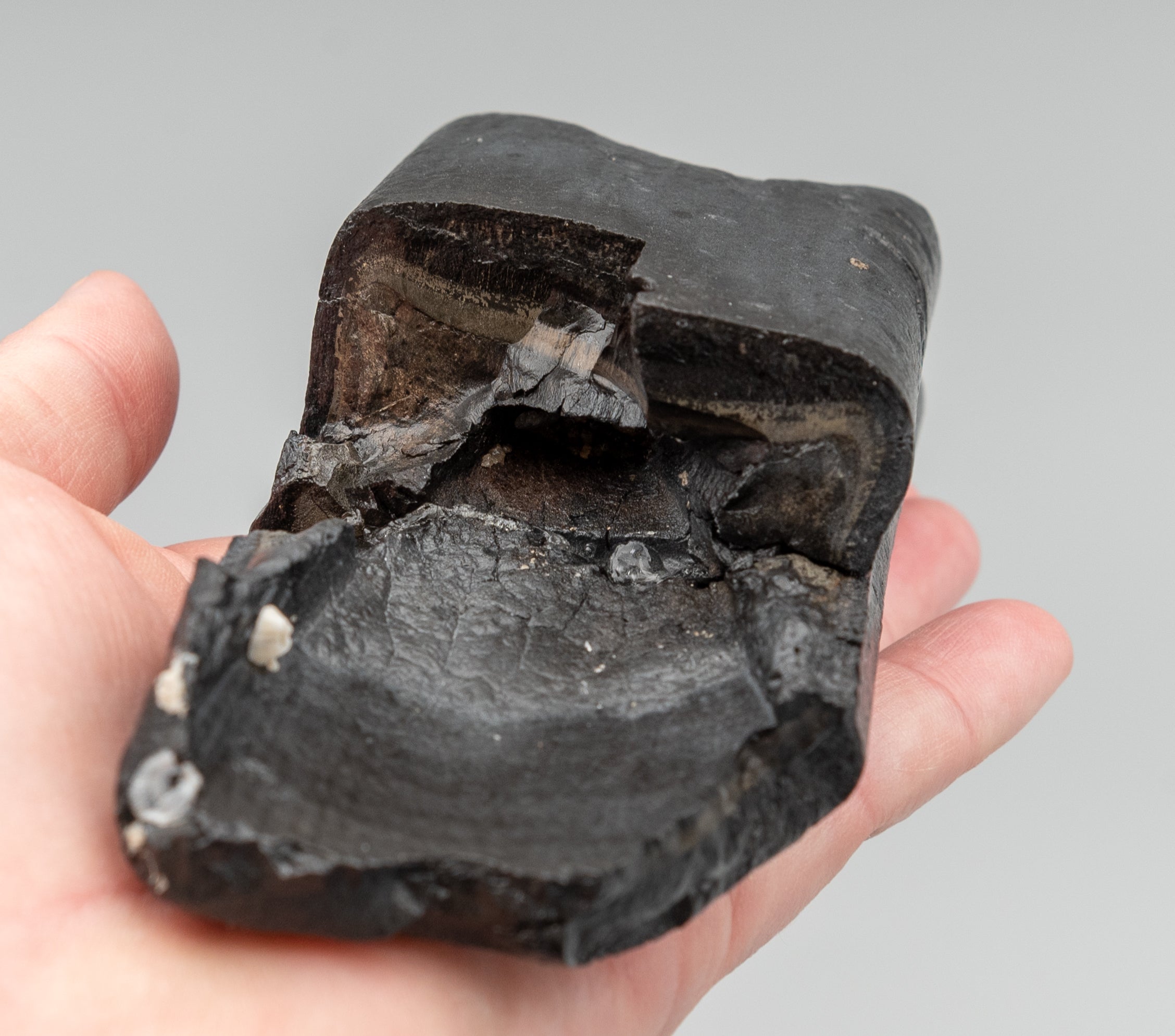





LG Eremotherium Fossil Giant Sloth Tooth SC
This fossil tooth from the Pleistocene giant sloth, Eremotherium laurillardi, is heavily mineralized and solid, making it a substantial specimen.
Eremotherium laurillardi, commonly known as the Giant Ground Sloth, was a prominent species during the Pleistocene epoch, which lasted from about 2.58 million to 11,700 years ago. This prehistoric mammal was one of the largest terrestrial mammals of its time, rivaling even the mammoths in size.
-
Era: Eremotherium laurillardi lived primarily during the Late Pleistocene, which is the last part of the Pleistocene epoch. This period was marked by repeated glaciations and the presence of many large mammals, known as megafauna.
-
Habitat: The habitat of Eremotherium laurillardi was diverse, ranging from the woodlands and grasslands to forested areas. Their remains have been found in various parts of North and South America, indicating a wide geographical range. This includes locations from southern parts of North America all the way down to the southernmost parts of South America.
-
Food: As a herbivore, Eremotherium laurillardi primarily fed on leaves, twigs, and fruits. Its large size meant it could reach higher branches, allowing it to feed on a variety of vegetation. Its diet would have varied depending on the regional flora available in its habitat.
-
Behavior and Lifestyle: Eremotherium laurillardi, like other ground sloths, was quadrupedal but likely capable of bipedal movement when reaching for higher vegetation. It was not an agile creature due to its size, but its bulk provided a defense against predators. There is evidence to suggest that they lived solitary lives, although occasional group living, especially in favorable feeding areas, cannot be ruled out. Their slow metabolism and large size would have made them reliant on environments with abundant food resources.
Overall, Eremotherium laurillardi was a remarkable creature, a testament to the diversity and grandeur of Pleistocene megafauna. Its existence provides valuable insights into the ecosystems of prehistoric times and the adaptations of large herbivores.
Species
Eremotherium laurillardi
AGE
Pleistocene
LOCATION
South Carolina River
Size
5.24”
Choose options






